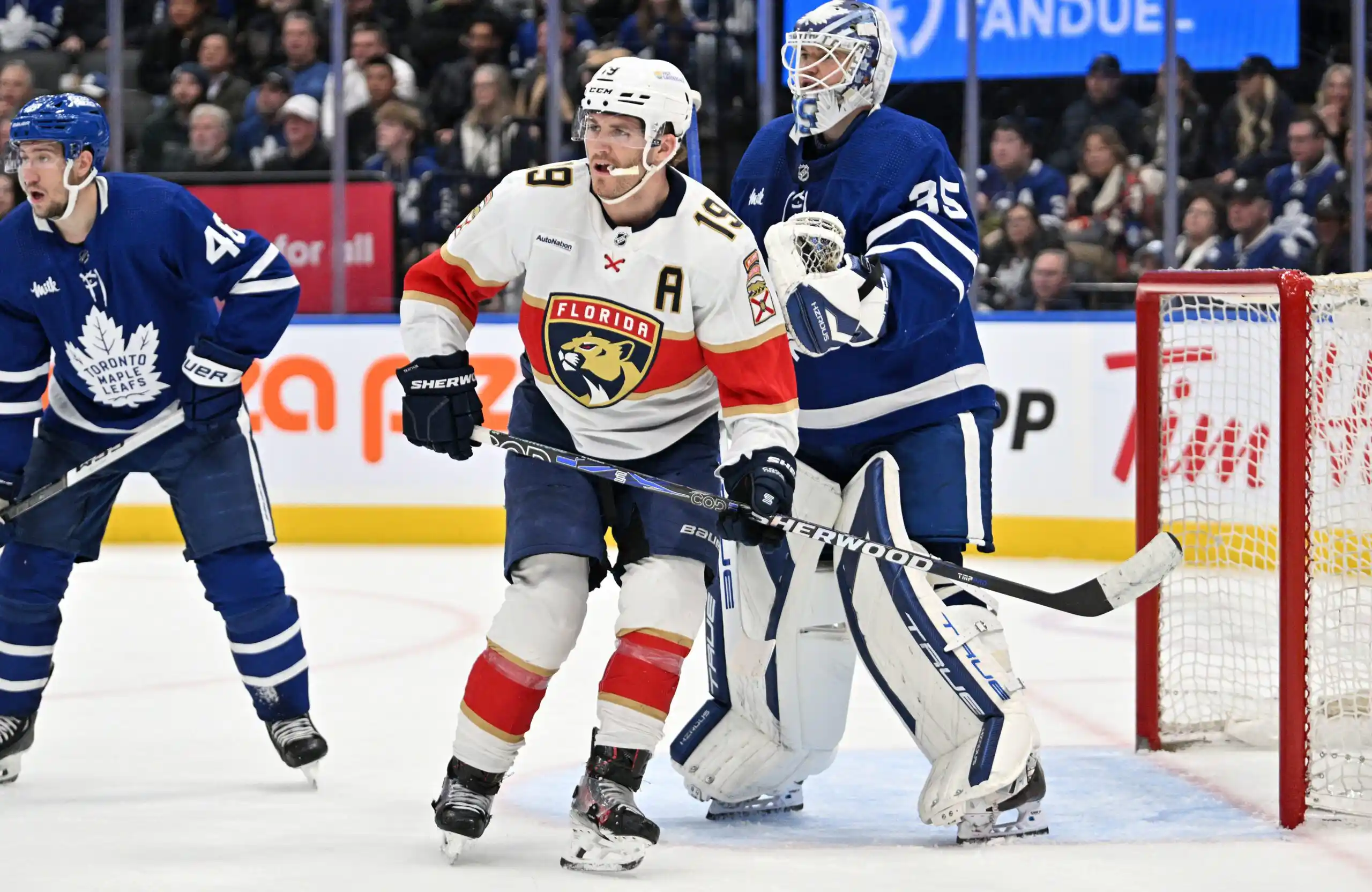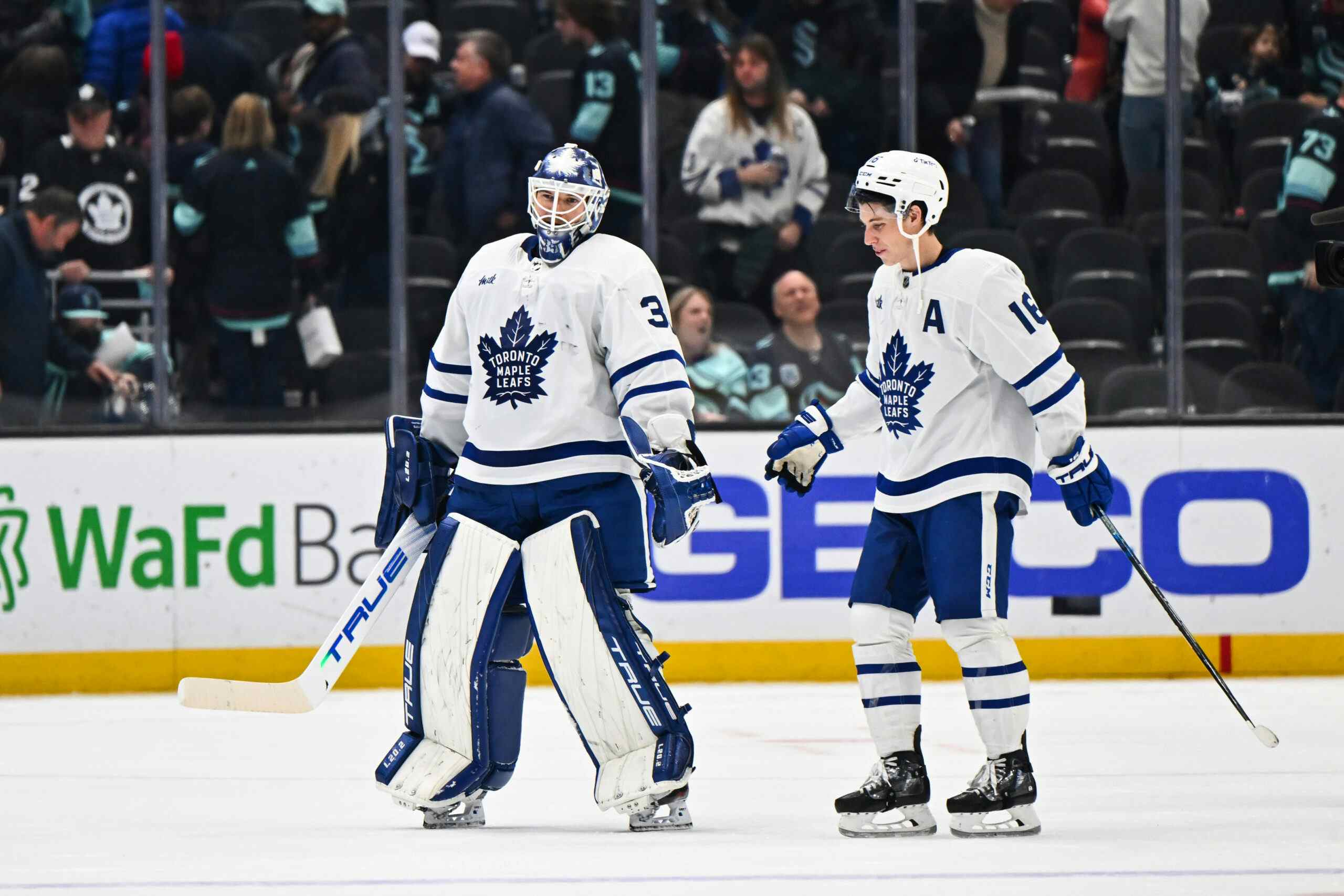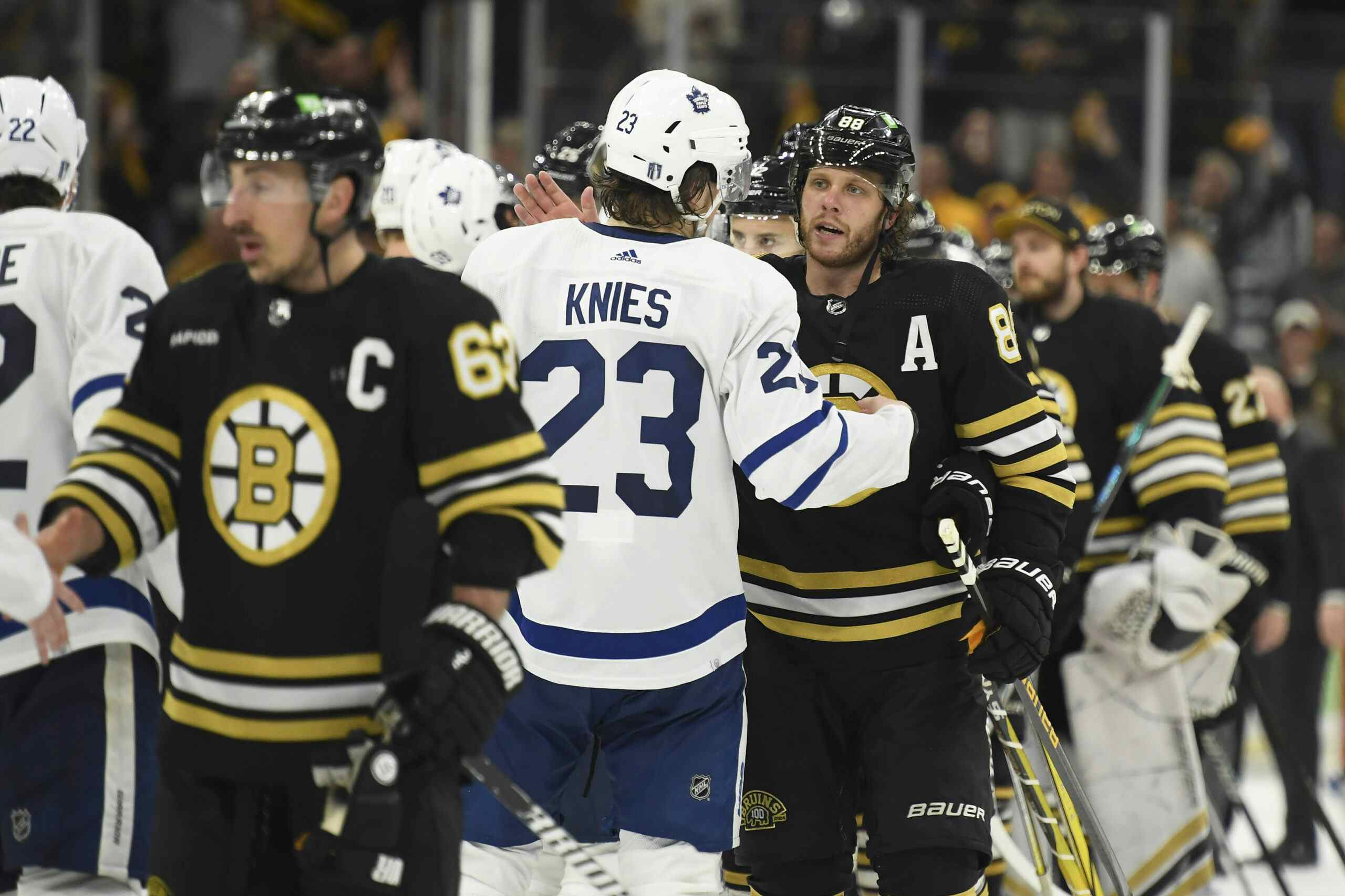2019 Leafs Prospect Rankings – The Maybes: Mason Marchment

Mason Marchment
Position: LW
Age: 24
TLN 2018 Prospect Ranking: Honorable Mention
Draft Information: Undrafted
When a General Manager talks about using all levels of development, they’re talking about players like Mason Marchment. Mason was a late bloomer to begin with, appearing in his first OHL game with the Otters at 19 and a half years old. This is likely where the Leafs got their first look at the ~0.5 p/g rookie, as he played alongside Connor McDavid, Dylan Strome, Alex DeBrincat, and future Leafs Travis Dermott and Nicolas Baptiste.
Marchment split his final OHL season between Hamilton and Mississauga before finishing out the year by appearing in 3 games for the Marlies on an ATO. His performance earned him an invitation to development camp, where he earned a 2-year, AHL contract.
Marchment seemed destined to play pro hockey, as the son of NHL defenceman, Bryan Marchment. His 6’4″ frame certainly didn’t hurt, but his skating needed some work, and he was spending a lot of time in the penalty box. His production was never top-tier, but his physical style of play and ability to throw players off their game translated well to higher levels.
Marchment spent his first pro season between the Solar Bears and Marlies, producing at a middle-six rate along the way. It was 2017-18 when he really started to realise his potential. His confidence grew as an AHL regular, and so too did his production. Over the next two seasons, Marchment would put up over 0.5 p/g, playing all situations for the Marlies. In March 2018, that consistency would earn him a two-year, Entry-Level Contract, $767,500 per year.
Skip This If You Don’t Want To Learn About The CBA
The fact that it was a two year deal at league minimum plus a maximum signing bonus shows where the Leafs can use their cash to save cap space, as they found an undervalued player and got him to take less than the $925k max ELC using that signing bonus.
Interestingly enough, this contract uses a unique loophole to achieve that. You see, a player on an ELC can have a maximum Paragraph 1 salary (salary plus signing bonuses) of $925,000. Additionally, the signing bonus cannot exceed 10% of the Paragraph 1 salary. This is why we typically see top prospects sign three-year ELCs with $832,500 in salary and $92,500 in signing bonus.
Marchment technically only has $650k salary in year one of his deal, and $700k in year two, so how does he get a $92,500 signing bonus when that’s 12% of his Paragraph 1 salary? Well, he’s got $182,500 performance bonuses in year one, and $132,500 in year two. Those performance bonuses can be considered Paragraph 1 salary for signing bonus considerations per CBA Article 9.3(b), and the sum of Marchment’s performance bonuses and Paragraph 1 salary in both years is… $925,000!
The Leafs basically gave Marchment games-played bonuses knowing he would spend his entire ELC in the minors, just to give him a bigger signing bonus.
That’s enough CBA talk for now.
Why Is He In This Tier?
Marchment doesn’t have the explosive offensive production that teammates like Jeremy Bracco do, but he’s shown he can elevate his game to the level around him repeatedly. A good example of this is a player like Frederik Gauthier, who never quite dominated at the CHL level, produced at a bottom-six rate in the AHL, then had a similar performance at the NHL level.
You would expect a player’s production to drop as they move up a level in pro, but guys who adapt to specialty roles at every level know how to find a way to keep up.
Marchment has the potential to provide the spark the Leafs seem to be without after the Kadri trade. Marchment has a Leo Komarov-esque ability to get under the opponent’s skin, turn pucks over, and draw penalties. He’s disruptive in every sense of the word, and teams hate to play against him. Marchment can penalty kill, he’s big, he throws the body around, and he has a nose for the net.
For $767,500, Marchment is what coaches dream of from a 4th liner, albeit if he can keep up. If you don’t believe me, ask Sheldon Keefe, who enjoyed having Marchment and current Leaf, Trevor Moore, on the 4th line en route to a Calder Cup Championship.
He’s a nice asset to keep around as injury depth too, as Marchment is waiver exempt and under team control for the next 2 years.
Even though he’s nearly NHL ready, Marchment in the maybes because you expect a 24-year-old to be NHL ready by this point. As I mentioned earlier, Marchment is a late bloomer, but he’s never had standout offensive production that makes him a sure thing.
From what little data is publicly available for AHL possession, Marchment is an exceedingly positive possession player. Watching him play in the Calder Cup Playoffs on a line with Trevor Moore was an example of where the eye test matches the analytics. They were so quick to disrupt the cycle in the defensive zone, get the puck out, and hound the defence with a relentless forecheck. Once that line got the puck in the offensive zone, they ran a really strong cycle down low and generated a ton of shots from near the goal line.
At the other end of the ice, they really forced the opposing team to chip the puck in by skating back through the middle and clogging the neutral zone.
Best-Case/Worst-Case Scenario
The best-case scenario would be a real feat for a player that went undrafted in the OHL and NHL. That would be Marchment earning an injury call up at some point in the next two seasons, and running with it, much the same way his former linemate Trevor Moore did.
If Marchment continues to elevate his game at every level, he would be an extremely effective 4th liner. He could be the player that every coach loves to go tap on the shoulder, knowing that one way or another he’s going to get the bench on its feet.
Whether you’re an old school thinker or a new-school, analytics-driven mind, you can see the value Marchment can provide. The old school mind might see the aggressiveness and emotion of Josh Anderson, the analytics crowd might see a 4th liner that can dominate possession against other 3rd and 4th lines with their big frame like Tomas Nosek. Whichever way you see it, Marchment provides something the Leafs don’t have much of, and he’s under team control for at least 2 years.
Being Waiver exempt on top of that makes him a great asset, especially with their AHL affiliate in the same city. If the Leafs are tight to the cap, they can send Marchment up and down at will to save money as the Anaheim Ducks have with Shea Theodore in the past. I wouldn’t go as far as to say that Marchment has 3rd line potential, but he could follow the path of a guy like Cal Clutterbuck, who made his 4th line so good the Islanders simply decided to make it their 3rd line.
The worst-case scenario is, unfortunately, something that’s a lot more common.
Most 24-year-olds are in their prime already, and they’re unlikely to see an increase in offensive production. If Marchment does get a callup and can’t immediately compete with bigger and stronger players, he may never get a chance to become an NHL regular.
Another unfortunate reality is that he could get lost in the depth of an organisation like Toronto and never get his first chance. Players like Nick Shore, Pontus Aberg, Kenny Agostino, Garrett Wilson are available every year, and the Leafs aren’t going to keep a spot open for Marchment if he doesn’t give them a reason to.
If the Leafs are just looking for a big body, they already have 6’2″ LW Garrett Wilson. With players like Gauthier, Petan, and Bracco uncertain of their NHL spot this season, it seems like Marchment will have to wait another year. If Marchment doesn’t take another season with the Marlies as motivation to improve, there’s plenty of players like him that headed to Europe at 25-years-old.
Outlook
While the numbers aren’t very exciting, Marchment has a chance to be one of those players who simply works his way to the NHL. Undrafted in the OHL, undrafted in the NHL, starts in the OHL at 19.5, earns an ATO, and impresses Kyle Dubas enough to eventually earn an NHL deal. We’ve seen Dubas do it before with Byron Froese and Justin Holl, and there’s a real chance Mason becomes the third player to go from the ECHL to the AHL to the NHL under Dubas’ watch.
Since Marchment is a late bloomer, he’s got a better chance to be an exception to the typical route to the NHL for a prospect. If he can stay healthy and produce a little more offensively in a top 6 role with the Marlies in 2019-20, Marchment can be an impact player in a depth role for the Leafs. He’s got championship pedigree, after all. In the final year of his ELC, look for the Leafs to try extending Marchment for one-year (RFA expiry), or three years to maximize the savings from RFA control.
Recent articles from Earl Schwartz





